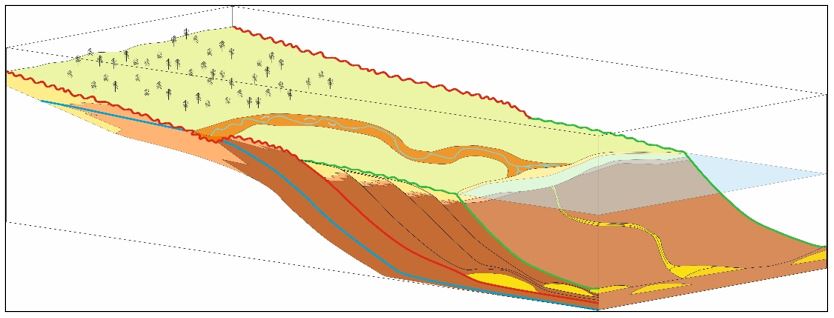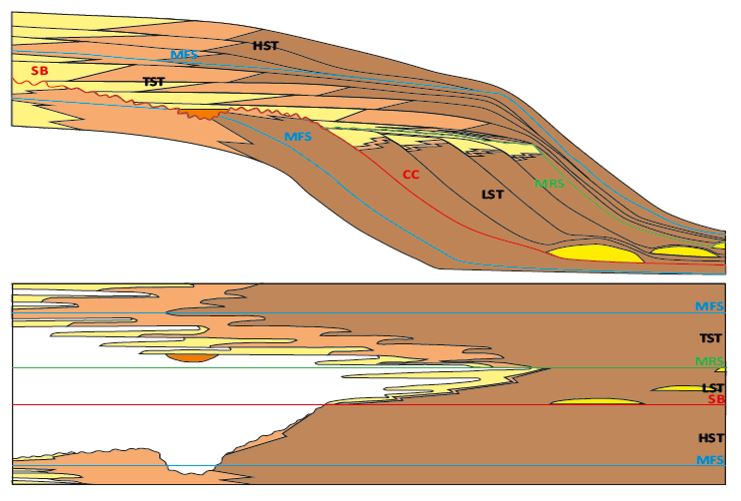Table of Contents
The Sequence Boundary (SB) and Correlative Conformity (CC)
The SB is formed when sea levels fall and the coastline moves distally across the continental shelf, usually as far as the continental shelf edge. Naturally, countless organisms which previously lived on or in the waters above the continental shelf – one of Earth’s most productive environments – have literally been left high and dry if they weren’t (as species rather than individuals) able to follow the receding waters quickly enough. Even if species could adapt quickly enough, the subsequent “new” coastal belt is considerably narrower than the submerged shelf that existed before and increased competition between species for the remaining available niches results in even more extinctions. Consequently the SB, as expressed in shelf settings, represents a major disruption to organic life with major extinction (or at least, temporary removal) of different species.


A major sea-level fall between the end of one sequence (during the highstand phase above) and the beginning of a new one (the lowstand phase bellow) resulting in a new Sequence Boundary (SB: red line) in the lower image.
When the next cycle of sea level change begins to cause sea levels to rise (the Transgressive Systems Tract - TST), the returning (submerged) continental shelf environment will contain suites of organisms made up of those species who were able to survive the disruption, together with a set of new species that may have arisen and can now exploit the new niches that are becoming available.
Consequently, the SB on the shelf is often marked (in a vertical sense) by a distinct break or change in the composition of fossil assemblages between the top of one sequence and the bottom of the overlying TST.
There is also, of course, evidence for a time-break in deposition – a hiatus or unconformity – across a SB. This can sometimes be identified by the absence of fossil index species or biozones that would normally be expected to be present if deposition were continuous over that particular time interval.
However, in distal parts of the basin, where water depths are perhaps in the order of hundreds or thousands of metres deep, even a global eustatic sea-level fall (at most probably a fall of around 150-200 metres) would not cause much disruption to marine benthic or planktonic life, and sedimentary deposition (albeit at very slow rates) would continue. The surface that represents the SB here is termed a “Correlative Conformity” (CC) and it may be difficult to detect any change in the fossil assemblages when crossing this boundary.

The story is somewhat different on continental slope and ocean floor settings. In these environments a global fall in sea level by around 150 metres do not have such an appreciable effect and the vast majority of slope environments, and all ocean floor ones, remain submerged and relatively unaffected. A 150 metre reduction in global sea level has little effect on an organism living 500m or even 5000m down on the sea floor. Nor is there necessarily any evidence for a break in deposition. Therefore SBs (usually termed “Correlative Conformities (CC)” given the lack of stratigraphic break) as expressed on the continental slope may be difficult to detect purely on biostratigraphic criteria. However, fossil signals in the overlying sediments of the Low Stand may give clues and point to the existence of the CC (see below).
